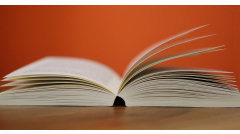Learning to read can unlock a world of possibilities for young minds, making the process of mastering sight words all the more exciting. This guide dives into the engaging practice of creating customized sight word flash cards, a fun and interactive way to enhance your child’s literacy journey. Imagine having tailored cards that cater precisely to your child’s learning steps, turning learning into an enjoyable game!
In this guide, you will discover how to tap into your creativity and provide a personalized touch to your child’s reading experience. By crafting unique flash cards that resonate with their interests, you'll not only reinforce their sight word recognition but also make learning a delightful adventure where they feel continually motivated to explore new words.
Discover the ultimate tool for enhancing literacy skills with the 'How to Guide: Creating Customized Sight Word Flash Cards for Effective Learning.' This innovative product allows parents and educators to design personalized flash cards tailored specifically to a child’s interests and learning pace. Ideal for supporting young readers, this guide emphasizes the importance of sight words, offering practical tips and creative ideas to make reading a more engaging experience.
With clear instructions and inspiration at your fingertips, you can easily create colorful and interactive flash cards that transform learning into a joyful game. This customized approach ensures a strong foundation for reading while making every session fun and effective, paving the way for a lifelong love of reading.
Choosing Target Words
Selecting the right sight words is crucial for effective learning when creating customized flash cards for sight words. Begin by identifying the sight words that are most relevant to the learner’s current level and goals. For this purpose, resources such as school curriculum guides or lists from educational sites can provide valuable insights. Most children start with foundational words, so focusing on those commonly encountered in their daily interactions can enhance their recognition and understanding. This can be further personalized by including words that resonate with the child's interests, be it animals, toys, or activities, ensuring that the flash cards engage them meaningfully.
To compile an effective list, consider including:
- The most common sight words appropriate for the child’s grade level.
- Words frequently seen in their favorite books or media.
- Everyday items or concepts around them that spark interest.
Such tailored flash cards not only improve vocabulary but also foster a more enjoyable and effective learning experience.
- Sight words that align with the learner's hobbies or activities.
- Words that you observe the child struggling with in reading.
- Seasonal or thematic words that can relate to events or holidays.
Materials Needed
Creating customized sight word flash cards is an engaging way to reinforce learning and make the process enjoyable for both children and educators. The right materials are essential for crafting these tools effectively. Start with sturdy cardstock or thick paper, as this provides durability and a professional feel to your flash cards. Cardstock is available in various colors, which can add an extra layer of appeal to the cards. Look for options that allow easy writing and are not too glossy, ensuring that the ink adheres well.
You will also need markers or pens to write the sight words clearly. Choose colors that are bright and bold to make the words stand out, enhancing visibility for young learners. Scissors are an essential tool for cutting the cardstock into the appropriate sizes. Precise cuts will result in uniform cards that are easy to handle. A hole punch can be an invaluable accessory if you wish to bind your flash cards together using a ring or a string, making them easy to store and transport.
- Cardstock or thick paper
- Markers or pens
- Scissors
- Hole punch
Optional materials can further enrich the flash card-making experience. Utilizing color pens can bring an extraordinary element to your flash cards, making them visually stimulating and engaging for learners. Laminating sheets are excellent for increasing durability, allowing the cards to withstand frequent handling and ensuring that they remain in great condition over time.
- Color pens for added visual stimulation
- Laminating sheets for durability
Designing Flash Cards
Creating customized sight word flash cards can significantly enhance a child's reading skills by promoting recognition and retention. When designing these flash cards, focus on clarity and engagement. Write each sight word clearly on one side, using a large, legible font. This helps ensure that children can easily read and recognize the word during practice sessions. Select a font that is simple and bold to enhance visibility. Additionally, integrating bright colors or images that relate to the word can greatly bolster memory retention. For example, associating the word "cat" with an illustration of a cat can create a stronger cognitive link to the word itself.
Consider using sturdy materials for durability, especially if the cards will be handled frequently. Laminate each card after decorating for added longevity. Organize the cards by difficulty, starting with high-frequency words, and progressively introduce more challenging ones. This structured approach will make the learning process less overwhelming and more manageable for children.
- Use contrasting colors for the text and background to enhance readability.
- Include a space for children to trace the word, reinforcing the connection between the visual and the physical act of writing.
- Incorporate fun and playful designs to make the learning process enjoyable.
Using Pictures
Creating customized sight word flash cards can significantly enhance the learning process for young readers. Incorporating pictures that correspond with each sight word not only makes the cards visually appealing but also aids in memory retention. This strategy leverages the power of visual association, making it easier for children to recall and recognize words. For instance, if the sight word is "cat," including a vibrant image of a cat next to the word can help form a mental link that reinforces both the visual and textual representation.
To attach pictures to each sight word, consider the following tips:
- Utilize free image resources like Unsplash or Pixabay to find high-quality pictures that resonate with children.
- Search for child-friendly clipart focusing on simplicity, ensuring that images do not distract from the sight word itself.
- If you're feeling creative, take your own photographs or draw simple illustrations that represent the sight word.
- Print images in colors that stand out yet complement the card's design to maintain engagement without overwhelming the senses.
- Consider using online tools such as Canva to create flash cards that allow you to easily integrate text and images in a visually appealing way.
Visuals can serve as a powerful mnemonic device in early literacy, helping students remember words through their corresponding images. Offer opportunities for children to interact with the visuals; for example, have them point to the picture and say the word aloud, linking the sound and sight together. This reinforcement tactic can significantly increase familiarity and confidence in reading. Additionally, grouping related words with corresponding visuals can create thematic connections that enrich the learning experience.
- Encourage children to suggest their own images, fostering a personal connection to the words.
- Utilize images of common objects that are easily recognizable to your child.
- Create a fun game by hiding the flash cards and using images to prompt them in identifying words.
Incorporating Phonics
Incorporating phonics into your customized sight word flash cards can significantly enhance the learning experience for young readers. Phonics connects sounds to letters or groups of letters, helping students decode new words and improve reading fluency. By embedding phonetic components into flash cards, educators and parents can empower learners not only to recognize sight words but also to pronounce and understand them. For each flash card, consider adding phonetic hints or breakdowns on the reverse side. This strategy creates a comprehensive learning tool that bridges sight recognition and phonetic understanding, making it easier for students to sound out unfamiliar words they encounter in texts.
To format phonetic hints effectively, utilizing a simple structure on the back of each flash card can be beneficial. For example, if you're working with the word "cat," you can include the following components:
- Phonetic Breakdown: c /æ/ /t/
- Sound Clues: Highlight each sound using color coding or bold formatting.
- Example Sentence: "The cat sat on the mat." This context reinforces the sight word's meaning and usage.
- Additional Tips: Provide relevant pictures next to each word to create visual associations.
By employing these strategies, flash cards become powerful educational tools that leaven phonics knowledge with sight recognition skills, promoting a holistic approach to reading. Consider adding rules of thumb like focusing on common phonetic patterns, which can enrich the learning experience further.
- Include common blends like “bl,” “st,” and “sn” on appropriate cards.
- Utilize rhyming words to strengthen sound associations.
Playing Learning Games
Creating customized sight word flash cards opens up a world of fun learning opportunities, especially when they are used in engaging games. Two classic games that are easy to set up and incredibly effective for reinforcing sight word recognition are Memory Match and Timed Challenges. For Memory Match, use your personalized flash cards by duplicating each card so you have pairs. Shuffle and lay them face down in rows. Players take turns flipping over two cards at a time, trying to find matches. To elevate engagement, encourage players to say the word out loud every time they turn a card over. Use a timer to implement a time limit for each player, turning it into a race against the clock! The person with the most matches at the end wins.
For a Timed Challenge, set a timer for one minute and select a small stack of your customized flash cards. Challenge learners to read as many cards as they can within that time frame. You can vary the challenge by increasing the number of cards or reducing the time. To keep the energy high, offer small rewards or stickers for achieving reading goals, celebrating each milestone achieved. For both games, use creativity in scoring and provide different levels of difficulty to accommodate various learning stages.
- Encourage teamwork by playing in pairs or small groups.
- Incorporate a points system where players earn extra points for correctly using the sight words in sentences.
- Switch up the words regularly to keep the games fresh and exciting!
Routine Practice Schedule
Creating a consistent practice schedule for using your custom sight word flash cards is essential for effective learning. Start by determining the ideal frequency for your child or student. Daily practice can significantly enhance retention, especially for younger learners who thrive on repetition. If daily sessions are too ambitious, consider adopting a weekly routine, spreading the cards across several days to maintain engagement without overwhelming the learner. Aim for short, focused sessions of 10 to 15 minutes, as this keeps attention intact and makes learning feel manageable.
Set specific goals for each practice session to foster a sense of achievement. For instance, you might have the learner master five new sight words each week, revisiting previously learned words during each session. Tracking progress is crucial; maintain a chart where you can mark off mastered words or record notes about new challenges. Adjust the routine based on this feedback—if certain words are consistently struggled with, spend extra time on them in upcoming sessions. Consider incorporating fun rewards for meeting goals, such as stickers or a small treat, to keep motivation high.
- Establish daily or weekly time slots for practice.
- Vary the review methods to keep sessions dynamic (e.g., using the cards in games).
- Maintain a visible progress tracker to encourage independence.
Related Products
Assessing Progress
Evaluating the learner's progress with customized sight word flash cards is essential for tailoring the learning experience. One effective method is periodic testing, which can help to identify the words the learner has mastered and those that require additional focus. Schedule these tests weekly or bi-weekly, and use a mix of familiar and newly introduced sight words. This not only reinforces what has been learned but also sets the stage for incremental learning. It is also beneficial to use different formats during these tests, such as reading aloud, writing the words, or identifying them in context to create a comprehensive view of their capabilities.
Another effective way to assess progress is to track the speed of recognition. This involves timing how long it takes for the learner to correctly identify each flash card. Recording the time taken across different sessions provides clear evidence of improvement. Additionally, maintain a log of the words the learner struggles with and revisit these more frequently. This targeted approach ensures mastery and retention over time. Progress can also be noted through informal observations during regular interactions with the flash cards. Pay attention to whether a learner needs cues to recall words or if they can recognize them instantly. Make note of any phrases they can construct with the words, as this is an excellent indicator of their understanding.
- Conduct weekly or bi-weekly testing sessions.
- Utilize varied formats (reading, writing, context identification) during tests.
- Track the time taken for recognition to understand speed improvement.
- Maintain a log of challenging words for targeted practice.
- Observe informal interactions to gauge fluency and understanding.
Storing Flash Cards
Maintaining the condition of your customized sight word flash cards is essential for effective learning. Proper storage can ensure longevity and usability. Consider organizing your flash cards in a durable box or envelope. Opt for a container that can withstand daily use and protects against wear and tear. Labeling the boxes or envelopes according to word categories—such as verbs, nouns, and adjectives—or using color-coded systems can significantly enhance accessibility during your learning sessions. This organized approach allows both educators and students to quickly find the cards needed for targeted practice.
When storing your flash cards, be mindful of environmental factors. Keep them in a cool, dry place away from direct sunlight to prevent fading and deterioration. Here are additional tips for storing your flash cards:
- Consider using plastic sleeves to protect individual cards from dirt and damage.
- Make sure to regularly check the condition of your cards and replace any that show signs of heavy wear.
- Create a rotation system, using a select few cards each week to keep the learning experience fresh.
- Use different boxes or envelopes for various learning stages—beginner, intermediate, and advanced—to cater to evolving student needs.
Adapting for Different Levels
Creating customized sight word flash cards for effective learning can be tailored to accommodate various learning levels and styles by making strategic adjustments. For early readers, begin with a foundation of high-frequency sight words that appear frequently in their reading materials. As students become more comfortable, gradually introduce multisyllabic words to increase complexity. For example, if the baseline flash cards feature simple words like “cat” and “dog,” transition to “elephant” and “butterfly” as learners progress. This ensures they are continuously challenged while still building confidence.
Incorporating interactive activities can significantly enhance the learning experience, especially for kinesthetic learners who benefit from hands-on engagement. For instance, pair each flash card with a movement. When students correctly identify a word, they take a corresponding action, such as jumping for simple words, or spelling out the word in the air for more complex words\. This method not only makes learning fun but also reinforces memory retention through physical activity. Other adaptations might include creating themed flash cards for personalized interests, such as dinosaurs or outer space, making the learning process more relatable and engaging for the student.
- Use color coding to distinguish between different levels of difficulty.
- Incorporate visual aids or images on flash cards for younger learners.
- Create competitive games involving flash cards to foster motivation and excitement.
- Allow students to create their own flash cards, giving them ownership of their learning process.
Why We Chose This Product
As we wrap up this guide on creating customized sight word flash cards, it's clear that the choice to focus on this product stems from the incredible flexibility and effectiveness it offers. Sight word acquisition is crucial for developing reading fluency, and personalized flash cards elevate the learning experience, encouraging kids to engage with words like never before.
- Enhances memory retention through customized visuals.
- Encourages interactive learning sessions.
- Fosters creativity and personal expression in education.
- Builds confidence through personalized achievements.
By choosing to share this approach, we hope to empower parents and educators with the tools needed for impactful learning. Customized sight word flash cards can truly transform the learning landscape, making it not just educational, but also incredibly fun for young learners.
Discover the ultimate tool for enhancing literacy skills with the 'How to Guide: Creating Customized Sight Word Flash Cards for Effective Learning.' This innovative product allows parents and educators to design personalized flash cards tailored specifically to a child’s interests and learning pace. Ideal for supporting young readers, this guide emphasizes the importance of sight words, offering practical tips and creative ideas to make reading a more engaging experience.
With clear instructions and inspiration at your fingertips, you can easily create colorful and interactive flash cards that transform learning into a joyful game. This customized approach ensures a strong foundation for reading while making every session fun and effective, paving the way for a lifelong love of reading.










